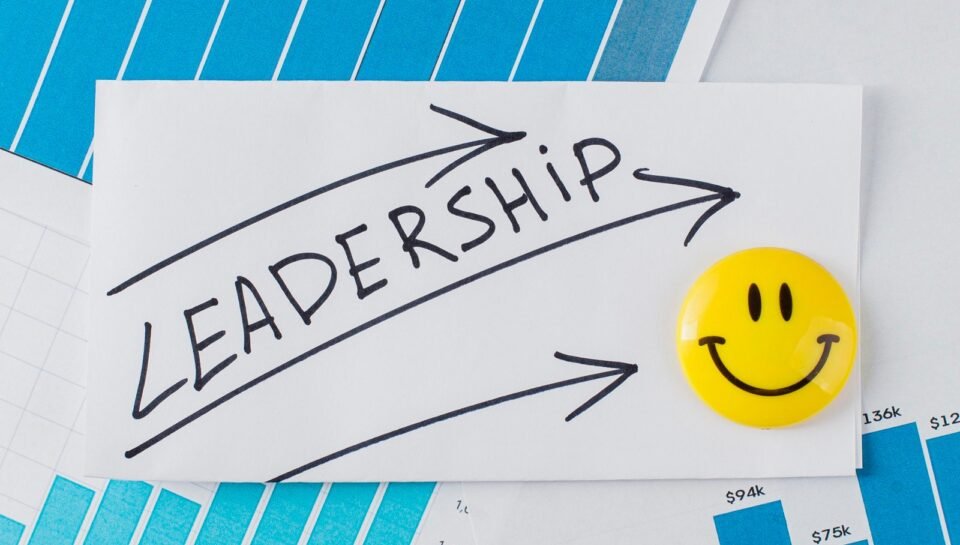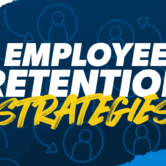What Is Leadership Development & Why Is It Important?

Leadership development is a hot topic in businesses of all sizes, and it’s no surprise why. Organizations that invest in their leaders reap numerous rewards, from improved employee engagement to enhanced company performance.
As the workplace evolves, so too must leaders’ skills and strategies. Understanding leadership development can help businesses ensure their decision-makers are primed to shape their organization toward growth and better work environments.
What Is Leadership Development?
Leadership development involves improving individuals’ skills, abilities, and confidence in leadership positions or preparing to assume such roles. When an individual steps into a leadership role, they should have the skills and tools to motivate and guide their team.
While many professionals are experienced in their industry and role, leadership is a delicate skill that is improved through experience and time. Leadership development programs enhance primary and secondary skills necessary for effective leaders, from skills in decision-making and communication to building upon their emotional intelligence and ability to resolve conflict.
It can involve various activities, including:
- In-person and virtual training sessions
- Workshops
- Leadership coaching and mentorship from senior executives
- Role-playing exercises
- Ongoing feedback
Leadership development is an ongoing journey of growth and learning, so those already in leadership roles can always benefit from continuing to develop their skills and practices.
Why Is Leadership Development Important?
Leadership development is more than a checkbox or nice-to-have for HR departments; it’s a strategic investment that benefits employees, operations, and the leaders’ performance. With effective programs, businesses can benefit from the following:
Increases Employee Engagement
People don’t quit companies; they quit bosses. When it comes to leadership development, this is true for two reasons. Effective leadership provides clear communication, meaningful feedback, and support, which can help employees feel valued and motivated. Employees are also interested in leadership and development opportunities, which can boost retention and drive internal engagement.
Boosts Company Performance
It’s no secret that great leaders drive results. Through thoughtful decision-making and strategic vision, effective leaders help organizations meet goals and adapt to changing market conditions. Investing in your company’s leaders ensures they are well-equipped to manage and optimize teams for the best performance and ensure your company remains competitive.
Cultivates a Strong Company Culture
Leaders who can cultivate a healthy and supportive work environment play a central role in shaping a positive company culture. Well-equipped leaders can foster a positive, collaborative, and inclusive work environment that significantly impacts employee retention and job satisfaction. Employees do not feel burned out or overworked because they have capable managers ensuring their well-being and performance.
Encourages Innovation and Adaptability
In fast-changing industries, businesses need leaders who can think outside the box and adapt quickly. Leadership development prepares individuals to embrace change, identify opportunities, and encourage team innovation. Plenty of growing pains exist when your company scales, shifts in a new direction, or experiences large-scale changes. Well-equipped leaders guide and counsel their team to ensure minimal disruptions when adapting to these changes.
Helps with Succession Planning
Organizations that prioritize their leaders are better positioned for the future. By providing leadership development to employees interested in climbing the corporate ladder, you have potential leaders who can be promoted to leadership positions when the position becomes available. Preparing the next generation of leaders ensures continuity and stability as seasoned leaders retire or move on.
What Are The Leadership Development Skills?
Effective leadership is built on a variety of skills. While the exact skills may vary depending on the industry or role, there are some key competencies that every leader should master.
Primary Skills
Primary skills in leadership development are the core competencies that are essential for effective leadership in most positions and businesses. They directly influence one’s ability to manage teams and aim for their goals.
Below, we outline a few primary skills to note:
1. Emotional Intelligence
Leaders with high emotional intelligence can empathize with their team members and manage their emotions effectively. This allows them to maintain positive professional relationships within the workplace.
2. Decision-Making
Strong leaders make thoughtful, decisive, and timely decisions, even under pressure. This skill involves weighing the pros and cons and choosing the best path forward.
3. Communication
Effective leaders must be able to convey their thoughts clearly, concisely, and purposefully. This allows them to provide clear direction, constructive feedback, and inspiring support.
4. Problem-Solving
Leaders are often faced with complex and conflicting challenges. Strong problem-solving skills allow them to identify issues, think critically, and develop practical solutions while keeping their team’s best interests at the forefront.
5. Team Building
Building and nurturing a cohesive team is essential for long-term success and employee retention. This skill involves objectively screening and interviewing potential candidates, fostering collaboration, and resolving conflicts.
6. Strategic Thinking
A great leader needs to look beyond day-to-day operations. They also consider the long-term goals and strategies that will make operations more efficient and drive organizational success.
7. Accountability
Adept leaders take responsibility for their actions, whether positively or negatively impacting their team or operations. They also hold their teams accountable for meeting objectives and standards.
8. Delegation
Leaders are not expected to handle every part of their operations. They must master the art of delegation and know how to assign tasks effectively, trust their team members to carry them out and focus on higher-level concerns.
Secondary Skills
Secondary skills are additional competencies that complement primary skills. They are good for certain situations and challenges, contributing to well-rounded leadership abilities.
1. Time Management
Effective leaders know how to prioritize their tasks and manage their time to maximize productivity. They know when to set a meeting or send an email and ensure everyone’s time is used efficiently.
2. Conflict Resolution
Leaders who are skilled in conflict resolution can navigate disagreements constructively. This can prevent a hostile work environment and ensure minimal disruption to team dynamics.
3. Creativity
Encouraging creative thinking allows leaders to explore new ideas and inspire innovation within their teams. This can lead to changes that optimize performance, boost productivity, and improve morale.
4. Networking
Successful leaders build strong networks both inside and outside their organization. This allows them to foster opportunities, gather valuable insights, and leverage their professional relationships.
5. Digital Proficiency
In today’s digital world, leaders who are comfortable with technology can streamline operations, improve communication, and drive efficiency. Automation and advanced tools can also drive performance within the team.
How Is Leadership Developed?
Leadership is developed through education, on-the-job experience, and ongoing feedback. Some of the most common methods used include:
- Formal Training Programs: These structured programs, workshops, and seminars teach the theoretical aspects of leadership. They are often delivered by professional trainers in a classroom or online setting.
- Mentorship and Coaching: Having a mentor or coach providing leadership coaching and development can help individuals navigate challenges and grow in their leadership abilities.
- On-the-job Experience: Real-world experience is one of the most valuable ways to develop leadership. Leaders learn by facing new challenges, making mistakes, and adapting their strategies over time.
- Simulations and Role-Playing: These exercises allow leaders to understand concepts and their practical applications. This is often used to practice decision-making, problem-solving, and communication in a controlled environment.
- Feedback and Assessments: Leadership development is a long-running process. Leaders often receive feedback from peers, mentors, or instructors, which helps them determine their strengths and areas for improvement.
What Happens During Leadership Development Training?
Companies and organizations can provide leadership development programs for all employees, those in leadership positions, or anyone who shows potential to step into leadership roles. While the process can vary between organizations, a general program follows these steps:
1. Initial Assessment: Participants begin with a self-assessment or a 360-degree review to identify strengths and areas for improvement.
2. Workshops, Seminars, and Other Development Activities: These sessions provide theoretical and practical knowledge on leadership principles. They can also engage in exercises that mimic real-life challenges in a controlled setting.
3. Mentorship and Coaching: Participants receive personalized guidance from experienced leaders or coaches to address specific developmental needs.
4. Application of Lessons: If applicable, participants in leadership positions apply what they have learned to their own team.
5. Feedback and Reflection: Participants receive feedback from mentors, peers, and instructors, which helps participants refine their skills and adapt their leadership approach.
6. Ongoing Practice: Leaders continue to apply new knowledge in their roles, gathering experience and improving through continuous learning.
What Are the Different Leadership Styles?
Depending on the workplace culture and environment your company wishes to maintain, each leadership style has its own strengths and weaknesses in different contexts:
- Autocratic Leadership: This leader makes decisions without seeking input from others. It’s highly effective in fast-paced environments where quick decisions are needed, so leaders must be critical and decisive about their options.
- Democratic Leadership: A democratic leader involves their team in decision-making processes. It fosters a collaborative work environment and increases team satisfaction.
- Laissez-Faire Leadership: These leaders trust their employees to make decisions and manage their work. This promotes autonomy and innovation, though it requires highly self-motivated teams.
- Servant Leadership: Servant leaders prioritize the needs of their team members above their own, fostering a people-first culture.
- Bureaucratic Leadership: Bureaucratic leaders follow strict rules and procedures. This style works well in certain industries that require precision and consistency.
Can Anyone Be a Leader?
Anyone with the right mindset, skills, and opportunities who want to explore bigger roles in the company can develop into a leader. Developing the skills of existing leaders and those who aspire to step into leadership roles ensures your organization is ready. Leadership development is recommended for:
- Senior leaders
- Executives
- Mid-level managers
- First-time managers
- High-performing, high-potential employees
Build Your Organization’s Next Generation of Leaders with HPWP
Effective leadership development equips individuals with the skills and confidence to inspire teams, drive innovation, and adapt to new challenges. By understanding leadership development and what it can do for your organization, you can invest in strong, capable leaders who foster a positive culture and ensure long-term success.
Unlock the potential of your organization’s leadership with HPWP Group. We specialize in developing effective leaders primed for your goals. Contact HPWP Group today to discuss solutions for your organizational development needs.










